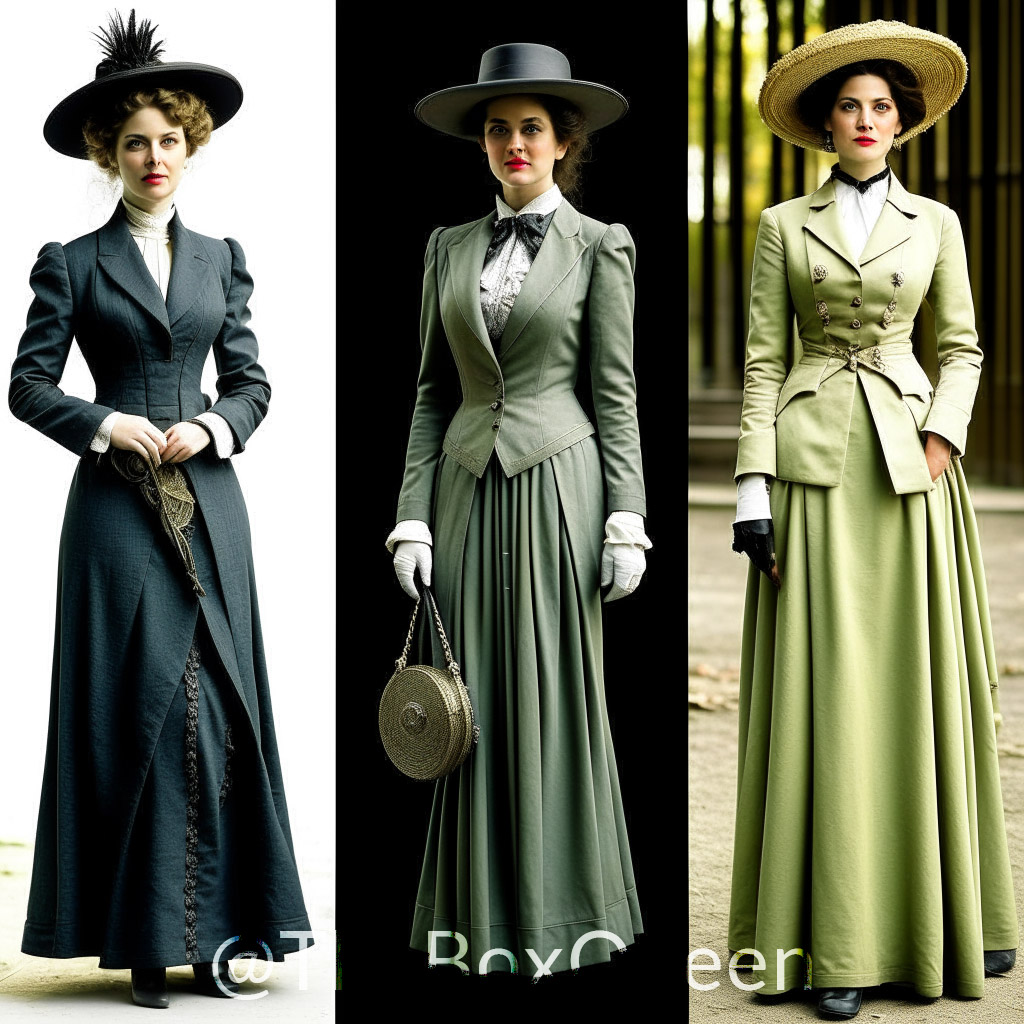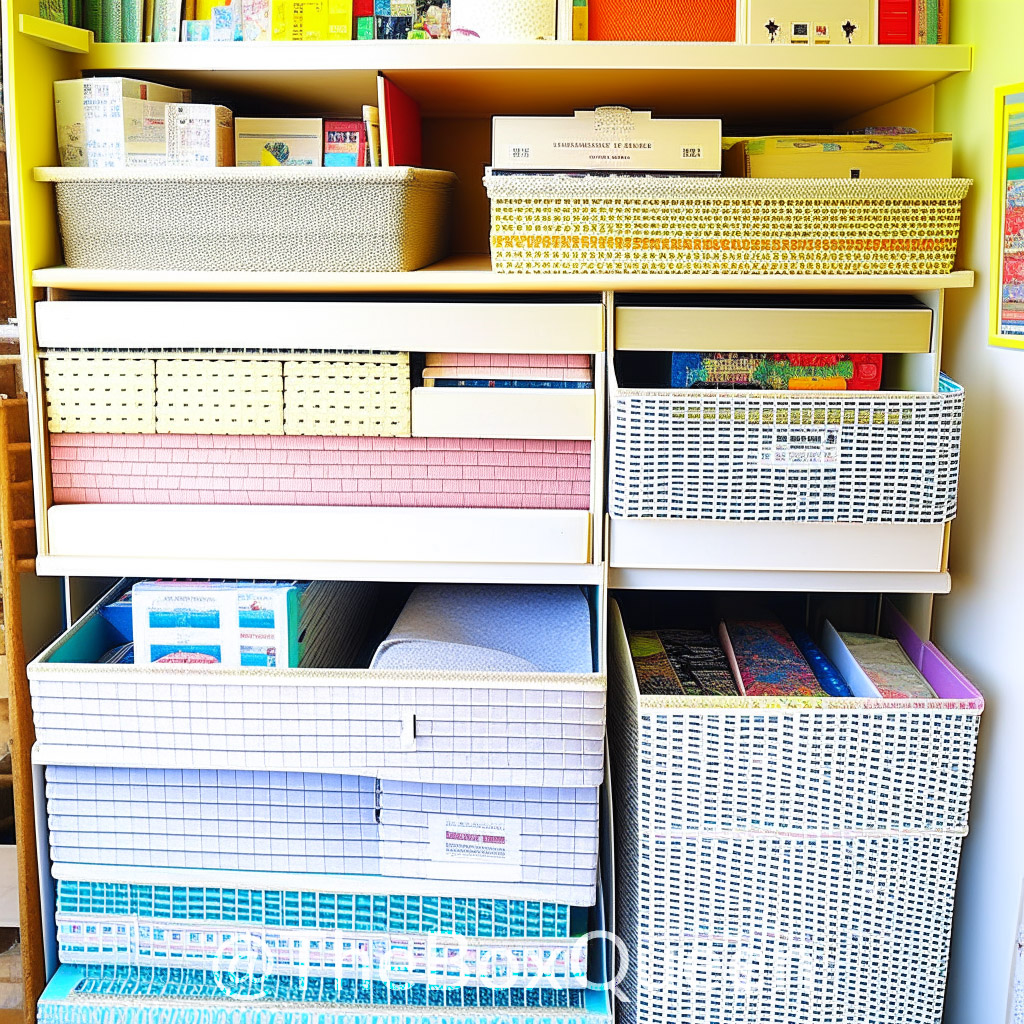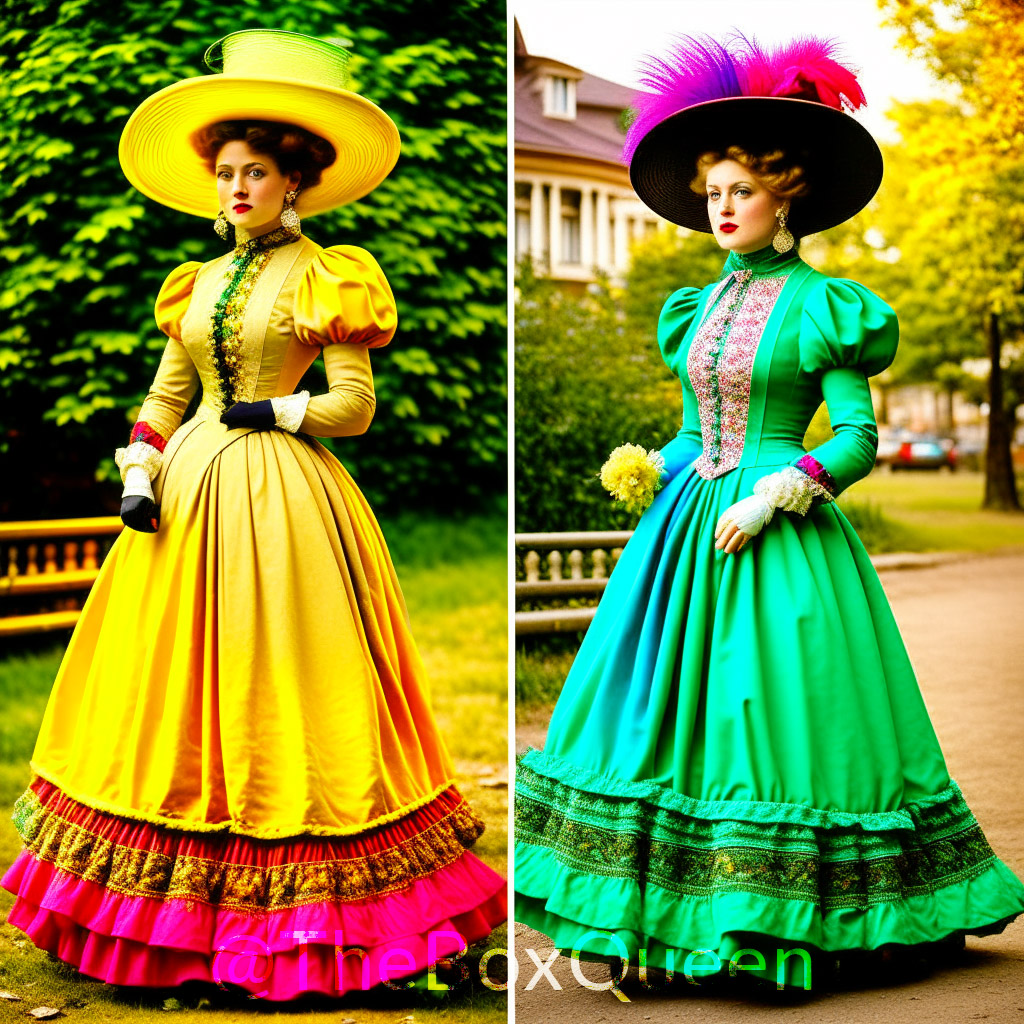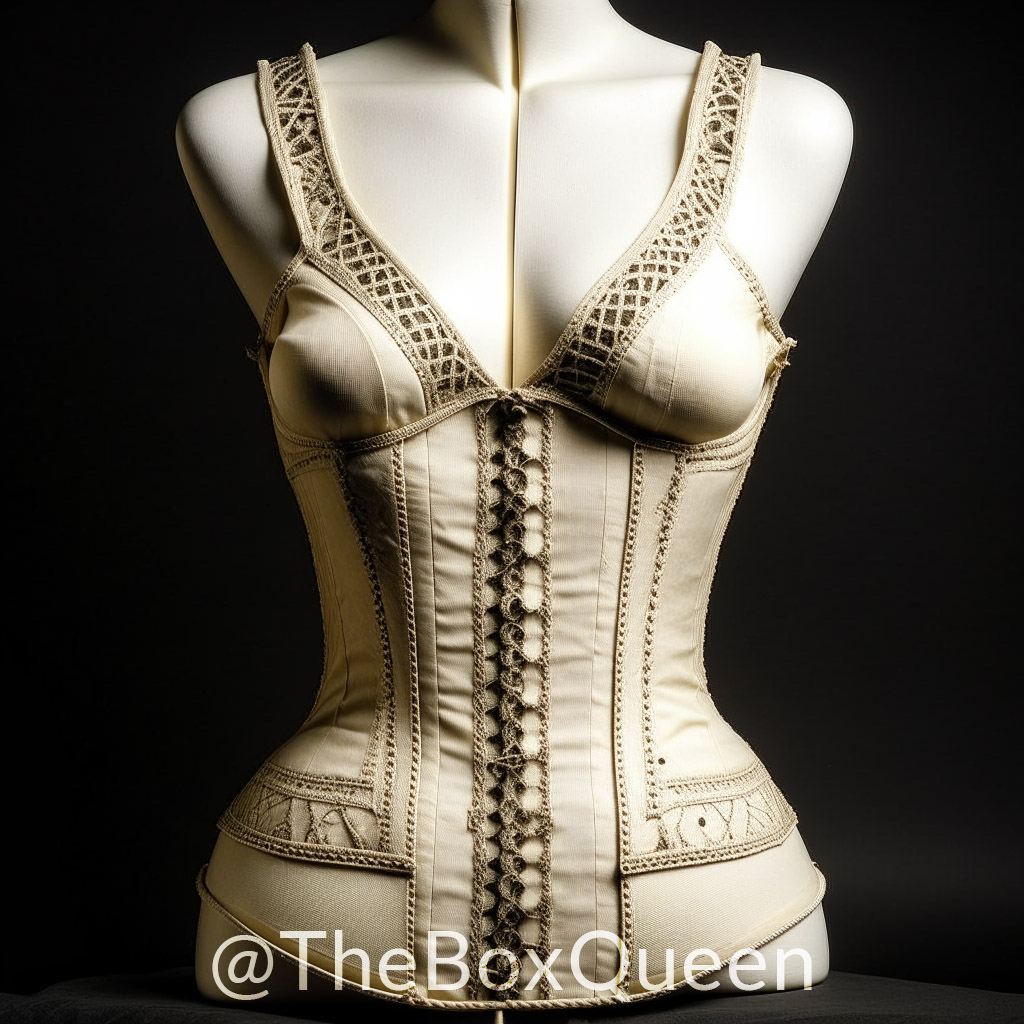Edwardian Women’s Suits and Fashion
Women’s dress significantly changed throughout the Edwardian period, which spanned King Edward VII’s rule from 1901 to 1910. The Victorian era’s constrictive corsets and full skirts were replaced by more practical and fitted silhouettes during the Edwardian era. The Edwardian woman’s suit, which effectively captured the shifting roles and aspirations of women during this time, was one of the most recognizable fashion statements of the era.
- Silhouette and Design:
The suits worn by women in the Edwardian era had an exquisite, fitted appearance. They had a tailored jacket and a skirt that matched, putting together a complete look that radiated refinement and femininity. The skirt often had a slender, straight design that ended at the ankle, while the jacket frequently featured a defined waistline and an A-line silhouette. The overall aesthetic intended to highlight a more organic form while still exuding sophistication.
- Fabrics and Colors:
The choice of fabrics played an essential role in Edwardian women’s suits. For their sturdiness and opulent texture, premium materials like tweed, wool, serge, and occasionally silk were preferred. The colors varied from delicate pastel shades to earthy tones, representing the period’s polished and delicate sensibility. The outfits also frequently featured stripes, checks, and herringbone patterns, which gave them a bit of texture and intrigue.
- Blouses and Accessorizes:
Under the jacket, women was wearing blouses with high collars, frequently embellished with lace or ruffles. The blouses allowed for personal expression, and the Edwardian woman’s suit was adaptable enough to go with a variety of blouse designs. Women added hats embellished with flowers, ribbons, and feathers to complete their look. Additionally necessary accessories included gloves, brooches, and handbags, showcasing the attention to detail in Edwardian clothing.
- Social Implications:
The rise of the Edwardian woman’s suit correlated with the suffrage motion and a changing thinking of women’s roles in society. Women were given more freedom of movement and the chance to participate in a variety of activities because to this clothing, which marked a break from the severely restricting clothing of the Victorian era. Progressive, independent women who defied gender stereotypes frequently wore the suits, subtly but effectively expressing their desire for social reform and equality.
- Legacy:
Despite the Edwardian era’s brief existence, its impact on fashion has endured. The feminine suit’s sophisticated and fitted features have persisted over time, evolving consistently to reflect shifting tastes and sensibilities. Even now, traces of the Edwardian woman’s suit can be seen in women’s fashion, paying homage to a time when femininity was seen as more liberated and certain.
Edwardian woman dress for family pictures
It’s important to achieve a balance between ensemble harmony and individual expression when picking out clothing for family photos. The objective is to produce a unified appearance that highlights the family’s harmony while letting each individual’s characteristics emerge. Here are some suggestions for choosing women’s clothing for family portraits:
- Coordinate Colors: Choose a color scheme that blends well together without being too same. Think about incorporating a few complementing hues into several outfits. Generally speaking, earthy tones or soft, pastel hues make for a well-balanced and classic aesthetic.
- Stick to Timeless Styles: In images, classic dress styles tend to look older than fashionable ones. Dresses with an a-line, wrap, or fit-and-flare silhouette are universally attractive and suitable for all body shapes. Avoid wearing apparel with prominent logos or images that could draw attention away from your family.
- Consider the Location and Season: The appropriate attire can vary depending on the occasion and season. Spring or summer outdoor photo shoots can be beautiful with flowing maxi dresses or floral designs. If it’s cold outside, you might wish to choose classy knee-length dresses and chic outerwear.
- Mind the Neckline and Sleeves: Select a neckline and sleeve length that you like based on your personal tastes and the formality of the photo shoot. Sleeves can offer a touch of elegance and adaptability, while V-neck and scoop necklines are attractive.
- Dress for Comfort: Family portrait sessions can last for a while, so be sure the dresses you pick are cozy and easy to move in. Avoid wearing clothing that is too constricted or tight because it could make you feel uncomfortable.
- Pay Attention to Accessories: Finishing touches for the ensembles can be added with subtle, complimentary accessories. Without dominating the outfit, delicate jewelry, scarves, or hair accessories might improve it.
- Consider the Family’s Style: While uniformity is important, make sure that each woman’s attire conveys her distinct sense of style and individuality. This will produce a more accurate and sincere portrayal of your family.
- Test Outfits in Advance: Have a dress rehearsal and take some practice pictures before to the big photo shoot. This will give you the chance to make any required alterations and ensure that the outfits go well together.
- Dress for the Theme (if applicable): Make sure the clothes fit the topic while still maintaining a uniform appearance if your family photo shoot has a specific theme or color scheme.
- Confidence is Key: Choose outfits that, above all else, give you a sense of comfort and confidence. The photos will reflect how you feel about your attire when you do.
Keep in mind that the purpose of family photos is to preserve special moments and honor your special relationship. You can make lovely and long-lasting memories that your family will appreciate for years by selecting clothes that combine coordination and originality.
Edwardian woman summer outfits
The light and breezy styles of Edwardian women’s summer clothing reflected the style fads of the early 20th century. Women’s clothes underwent a change during the Edwardian era, which lasted from the late 1890s through the early 1910s, moving away from the bulky, layered styles of the Victorian era and toward more casual, comfortable attire. Typical components of summer clothes for Edwardian women include the following:
- White and Light-Colored Dresses: The summer of the Edwardian era saw a rise in the popularity of white and pastel garments. For their breathability and comfort in warm weather, lightweight materials like cotton, linen, and muslin were preferred. To add some softness and detail, these dresses frequently had delicate embroidery, lace trims, or pintucks.
- High Necklines and Short Sleeves: High necklines were a common feature of Edwardian summer dresses, and lace or ruffles were frequently added for a romantic and soft appearance. Short puffed sleeves were popular at the time because they offered some coverage while promoting airflow.
- Empire Waistline: In the Edwardian era, a lot of summer dresses had an empire waistline that sat just below the bust. This pattern produced a loose-fitting silhouette that flowed and provided greater room for mobility and ventilation in hot weather.
- Tea Gowns: Women wore loose-fitting, unstructured tea gowns made of lightweight materials for more casual or at-home situations. For afternoon tea parties and unhurried social gatherings, tea robes were popular.
- Shirtwaist Dresses: During this time, men’s shirts served as the model for fashionable shirtwaist dresses. They provided a useful and fashionable choice for daily wear, with a button-up bodice and a straight or A-line skirt.
- Wide-brimmed Hats: Women in the Edwardian era frequently wore wide-brimmed hats made of straw or airy materials to shield themselves from the sun. These hats not only offered protection from the sun, but they also gave the whole ensemble a refined touch.
- Parasols: Women wore parasols in addition to hats to protect themselves from the sun’s rays. Parasols, which came in a variety of patterns and hues, complemented summer clothing and served as a fashionable accessory.
- Light Outerwear: Women may don light chiffon or silk jackets or capes on chilly summer evenings or for more formal occasions. These clothes gave a further degree of comfort and sophistication.
- Open-toed Shoes: In the heat of the Edwardian summer, open-toed or strappy shoes were preferred to closed-toe shoes.
- Delicate Accessories: Women decked themselves with delicate accessories like pearl necklaces, lace handkerchiefs, and straightforward brooches to complete the summer style.
Overall, summer clothing for women in the Edwardian era emphasized a softer, more feminine style while incorporating functional aspects to accommodate the warmer climate. Women were able to maintain their sense of style and comfort during the sweltering summer months because to the emphasis placed on airy materials, delicate embellishments, and loose-fitting designs.
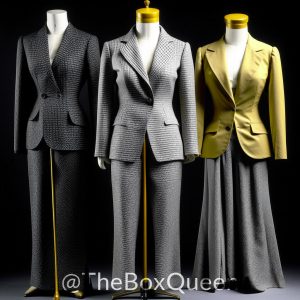
Edwardian female era hats
From the late 1890s through the early 1910s, the Edwardian era, hats were a crucial and noticeable component of women’s fashion. Women’s hats from the Edwardian era were known for their complex decorations, varied shapes, and extravagant designs. Hats completed and completed the look by serving both practical and fashionable reasons. Following are a few of the popular hat styles worn by ladies in the Edwardian era:
- Picture Hats: One of the most recognizable hat designs from the Edwardian era was the picture hat. These wide, frequently floppy brims of the large-brimmed hats framed the face and occasionally reached the shoulders. Picture hats were incredibly ornately decorated with feathers, ribbons, flowers, and bows. They were fashioned from materials including straw, silk, and velvet. For social gatherings and outdoor events, they were frequently worn.
- Cartwheel Hats: Cartwheel hats had broad brims that provide sufficient sun protection, similar to picture hats. However, compared to the softer, floppy brims of picture hats, cartwheel hats often had a more defined and structured design. They frequently featured ribbons and silk flowers as decorations, which gave the ensemble an air of grandeur.
- Sailor Hats: Edwardian sailor hats had a flat crown and a short, rolled brim, taking its cues from sailor caps. These hats, which were popular for outdoor and beachwear, were typically constructed of straw or felt. Summer was an especially popular time to wear sailor hats because of their nautical style.
- Toques and Turbans: Toques were small, snug-fitting hats that encircled the head and frequently had no brim at all. Feathers, ribbons, and occasionally a fancy jeweled pin were used to embellish them. During this time, turbans that drew inspiration from Eastern styles were also popular. They were wrapped around the head, giving it a chic and unique look.
- Bonnets: Despite beginning to lose favor in the Edwardian era, bonnets were still worn, particularly by older or more traditional ladies. The brims of bonnets generally tied under the chin and framed the face, giving them a classic and refined appearance.
- Feathered Hats: For Edwardian hats, feathers were a common adornment that were frequently combined with other decorative components. Ostrich, peacock, or even exotic bird feather plumes were utilized to give the caps drama and height.
- Cloche Hats: The cloche hat, which would become popular in the following decades, first appeared in the later half of the Edwardian era. Cloche hats hugged the head and framed the face with its bell-shaped fit. They did, however, become more well-liked in the 1920s.
Women’s hats from this era, which represented social position and refinement, were an essential component of the fashion statement. The ornate and ornamental design of these hats demonstrated the craftsmanship and attention to detail typical of Edwardian clothing.

Edwardian hairstyles female
Women’s hairdos during the Edwardian era were ornate and frequently required the help of maids or hairdressers to obtain the intended appearance. According to the event and a woman’s social standing, these hairstyles changed, reflecting the elegance and sophistication of the era. Popular hairstyles during the era for ladies include the following:
- Gibson Girl Hairstyle: The Gibson Girl served as a symbol of the idealized feminine beauty of the Edwardian era. This hairdo included a soft, puffed pompadour or “pouf” at the front of the head, with the remainder of the hair pulled back into a chignon or bun. The beautiful design highlighted a woman’s shoulders and neck.
- Pompadour Updo: Ladies with longer hair frequently sported pompadour updos, in which the front area of the hair was teased and piled high on top of the head in a puffy style. The remaining hair was pulled back into a bun or chignon for a chic and voluminous appearance.
- Marcel Waves: During the Edwardian era, Marcel waves were a common hairstyle that entailed making deep, S-shaped waves in the hair. These waves were created by women using heated curling irons, which gave their hairstyles texture and grace.
- Low Buns and Knots: Women would wear their hair in low buns or knots at the nape of the neck for a more subdued and official appearance. These hairdos were frequently neat and sleek, with the hair held in place by hairpins and ornamental combs.
- Edwardian Pigtails: In the Edwardian era, some women and younger girls favored the ease of long, braided pigtails. These pigtails were occasionally wrapped around the head to resemble a crown or decorated with bows and ribbons for a more youthful look.
- Hats and Hairstyles: In the Edwardian era, extravagant hairstyles frequently had to make room for the in-vogue hats of the day. Hairstyles were created to coordinate with the forms and sizes of the hats, which were an essential component of a woman’s costume.
- Hair Accessories: Edwardian women adorned their hairstyles with a variety of hair accessories, including headbands, combs, and jeweled hairpins. A further touch of softness and elegance could be added with the help of feathers, flowers, and ribbons.
- Short Hair: Some women started embracing shorter hairstyles around the end of the Edwardian era, especially the “bob” cut. The most extreme modifications in women’s hairstyles during the 1920s were made possible because to this revolutionary haircut.
Overall, women’s hairstyles throughout the Edwardian era were elegant, elaborate, and designed to complement the period’s clothing. Although they took time and effort to perfect, these hairstyles were valued during this time period as indicators of a woman’s sophistication and social standing.
